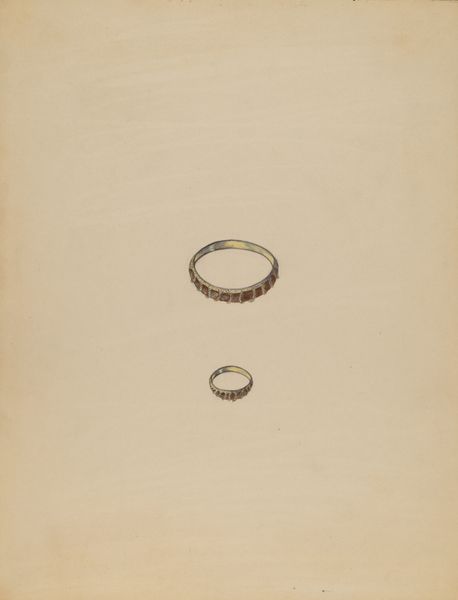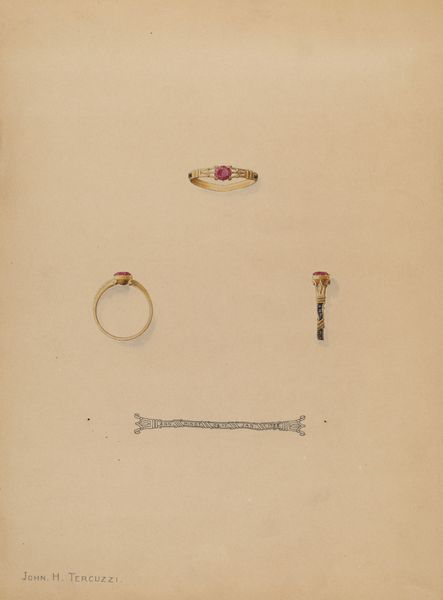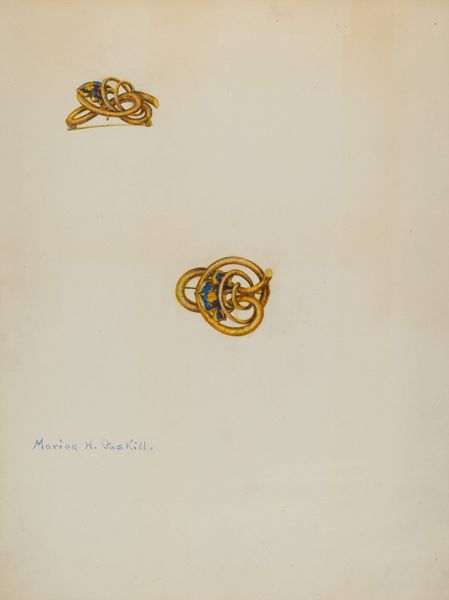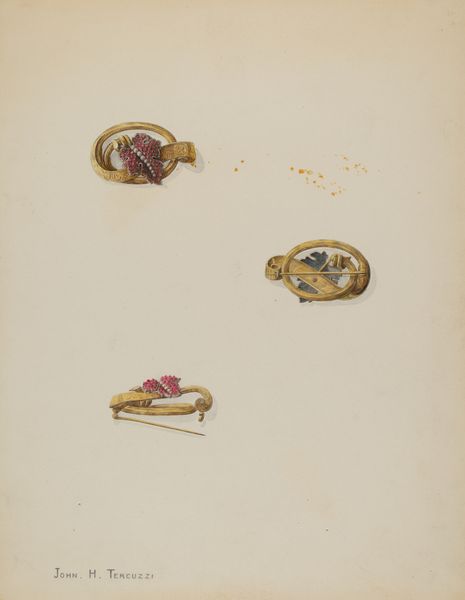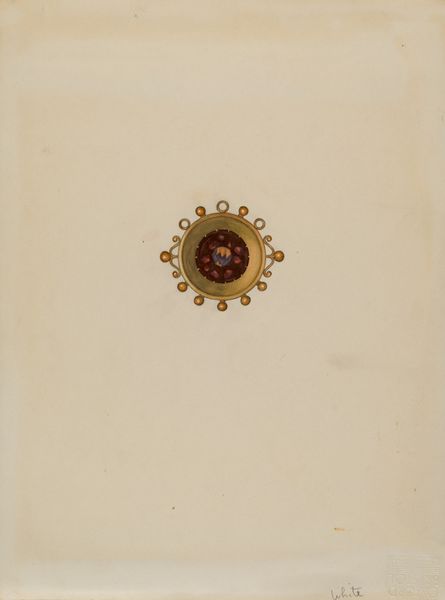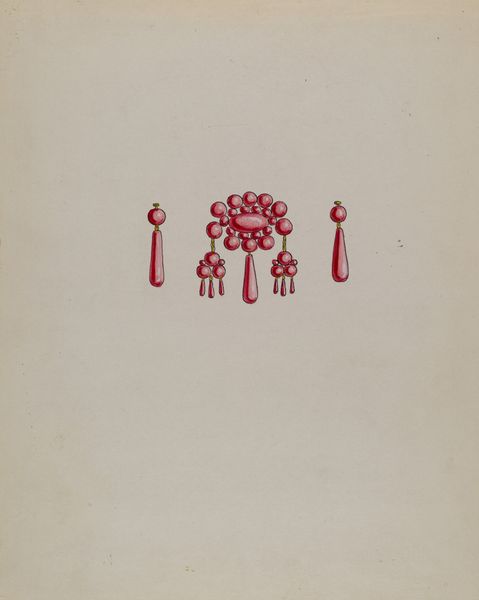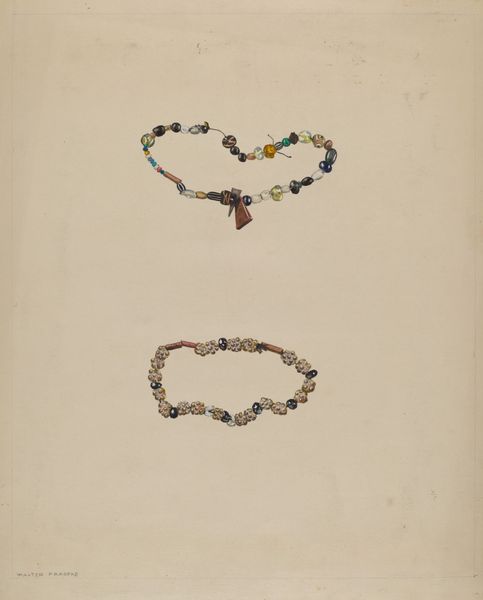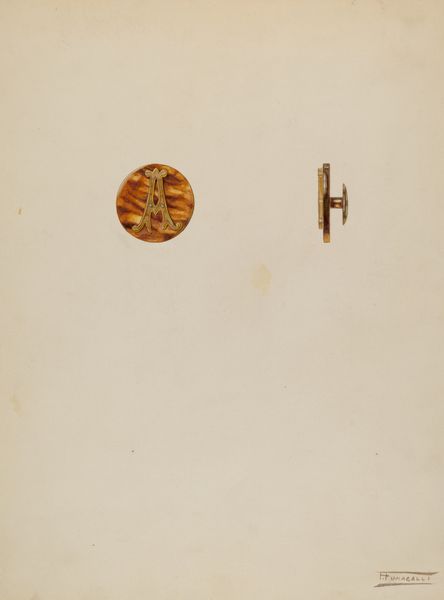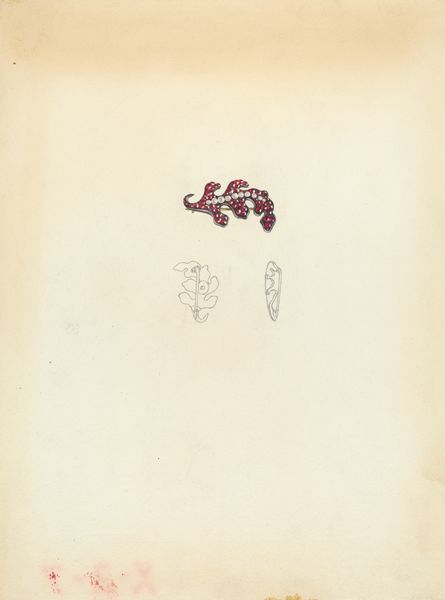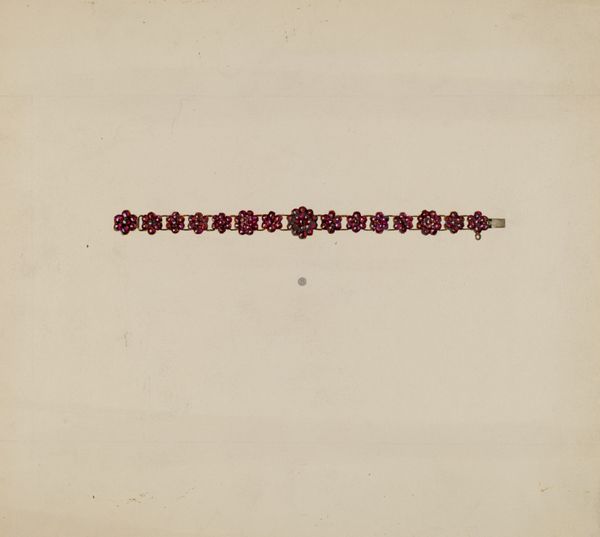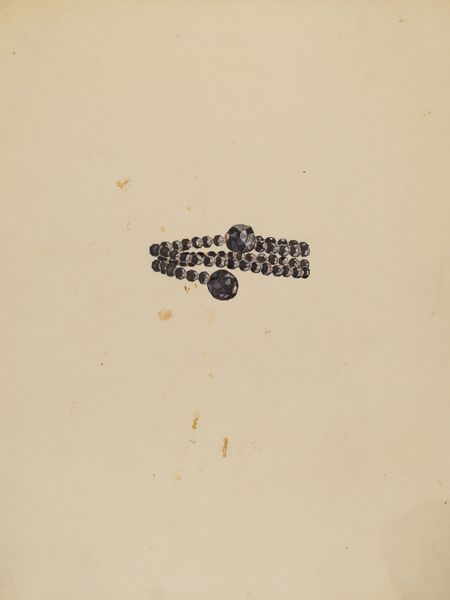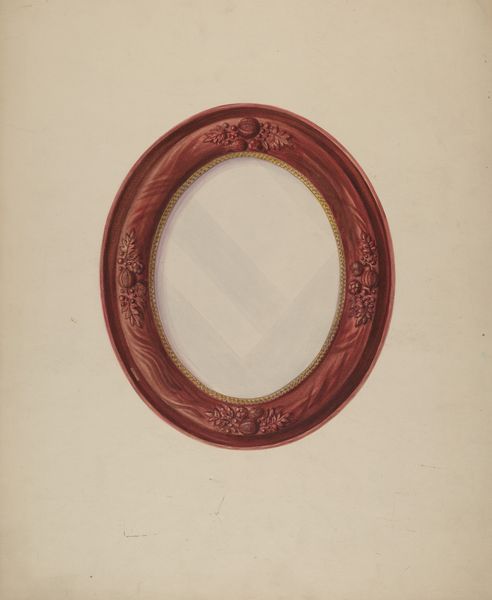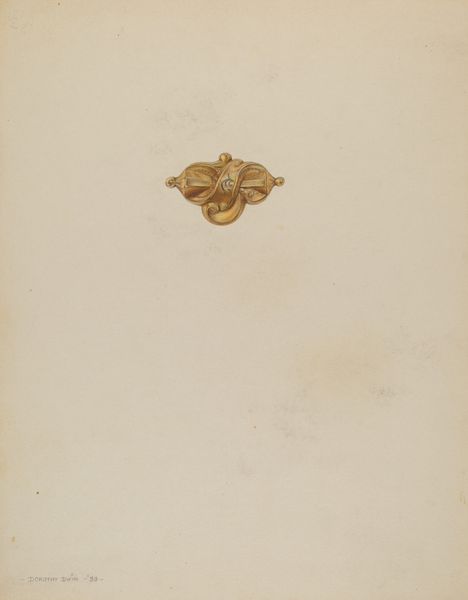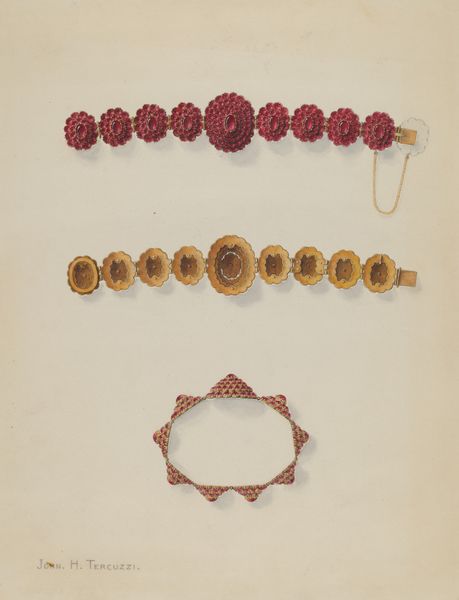
drawing, watercolor
#
portrait
#
drawing
#
watercolor
#
ceramic
#
watercolour illustration
#
academic-art
#
decorative-art
Dimensions: overall: 29 x 21.8 cm (11 7/16 x 8 9/16 in.)
Copyright: National Gallery of Art: CC0 1.0
Editor: This watercolor drawing from around 1938, simply titled "Ring" by John H. Tercuzzi, is strikingly simple in its presentation. The vibrant reds and golds pop, but the isolation of the subject matter gives me a clinical feeling, almost like a jeweler's catalogue. What's your take? Curator: It's interesting you see that "clinical" feel. Consider the context: during the late 1930s, commercial art and design were becoming increasingly integrated with fine art, influencing aesthetics and visual communication across social classes. How do you think the commercial pressures of the time affected the perceived value or meaning of luxury items like rings? Editor: That's a great point. Perhaps the clean, straightforward depiction aimed to highlight the ring’s inherent worth, emphasizing its material value during a time of economic uncertainty? Was jewelry often presented so plainly? Curator: Precisely. Think of it as democratization through clarity. Instead of romanticized or idealized portraits adorned with jewelry, you have direct presentations of the objects themselves. Consider, too, that watercolor was a popular medium for commercial illustrations. Does seeing it as a design proposal change your view? Editor: Absolutely. Framing it as a commercial design clarifies its purpose. The artistic merit feels less about personal expression and more about appealing to a potential buyer. I'd previously not considered that intersection. Curator: It speaks volumes about art's role in shaping consumer culture and how economic forces influence artistic choices. I always find it interesting to think of this kind of piece in terms of democratization. Editor: It is fascinating. Thinking about art and design in a historical context makes me realize that seemingly straightforward pieces hold complex layers of societal influences and market dynamics. Curator: Indeed. By acknowledging the relationship between economic, historical and commercial forces, you start to perceive the complex layers inherent in seemingly simple works of art like this rendering.
Comments
No comments
Be the first to comment and join the conversation on the ultimate creative platform.
